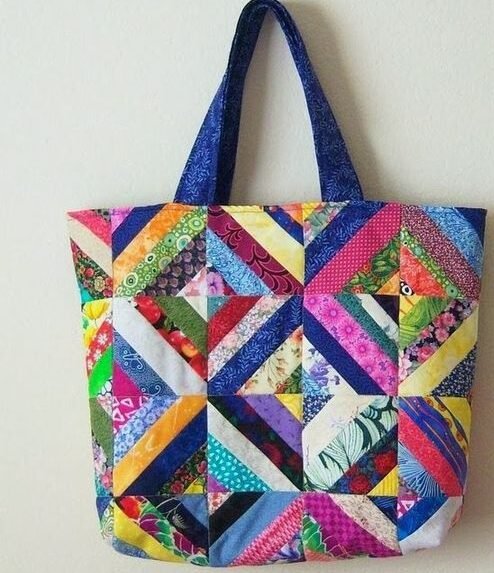Quilting is a cherished craft that has been passed down through generations, captivating enthusiasts with its blend of tradition, creativity, and practicality.
Among the vast array of quilt patterns available, the Vortex Quilt stands out for its mesmerizing design and versatile construction.
In this comprehensive guide, we’ll explore the intricacies of the Vortex Quilt pattern, from its origins and construction techniques to creative variations and project ideas.

Exploring the Origins of the Vortex Quilt
The Vortex Quilt pattern, with its swirling, circular designs radiating from a central point, draws inspiration from both the natural world and mathematical principles.
While the exact origins of the pattern remain somewhat elusive, its roots can be traced back to traditional quilting motifs such as the Drunkard’s Path and the Dresden Plate.
Over time, quilters have adapted and reinterpreted these classic designs to create the mesmerizing vortex effect seen in modern iterations of the pattern.
One theory suggests that the Vortex Quilt pattern may have originated from the concept of fractals, which are complex geometric shapes that exhibit self-similar patterns at every scale.
This mathematical inspiration is evident in the repetitive, swirling motifs that characterize the Vortex Quilt, creating a sense of movement and depth within the design.
Another possible influence on the Vortex Quilt pattern is the study of spirals and vortex phenomena in nature, from the swirling patterns of galaxies to the intricate spirals found in seashells and flowers.
By drawing on these natural forms, quilters infuse their Vortex Quilts with a sense of organic beauty and harmonious symmetry.

Mastering Construction Techniques for the Vortex Quilt
Creating a Vortex Quilt requires a combination of precise piecing and careful placement of fabric to achieve the desired swirling effect.
While the pattern may appear complex at first glance, quilters of all skill levels can master the technique with practice and patience.

Here’s a step-by-step guide to constructing your own Vortex Quilt:
- Select Your Fabrics: Choose a variety of fabrics in complementary colors and patterns to create visual interest and dimension in your quilt. Consider using a mix of solids, prints, and textures to enhance the swirling effect of the vortex.
- Cutting and Piecing: Begin by cutting your fabric into strips or wedges, depending on the design of your vortex. Piece the strips together in a circular fashion, gradually expanding outward from the center to create the swirling effect. Pay close attention to seam allowances and alignment to ensure smooth transitions between fabric sections.
- Assembly and Finishing: Once you’ve pieced together the main body of your quilt top, add borders and any additional embellishments to enhance the overall design. Layer the quilt top with batting and backing fabric, then quilt as desired to secure the layers together. Finish your quilt with binding and a label to complete the project.

Exploring Creative Variations of the Vortex Quilt
One of the joys of quilting is the opportunity to experiment with different colors, patterns, and techniques to create unique and personalized works of art.
The Vortex Quilt pattern lends itself well to creative interpretation, allowing quilters to explore various design elements and modifications. Here are some ideas for putting your own spin on the Vortex Quilt:
- Color Play: Experiment with bold, contrasting colors to create dynamic visual effects within the vortex design. Consider using gradient fabrics or ombré color schemes to add depth and dimension to your quilt.
- Scale and Proportion: Play with the scale and proportion of your vortex design to create different visual effects. Try enlarging the central vortex for a dramatic focal point, or create multiple smaller vortices for a more intricate overall pattern.
- Embellishments and Texture: Incorporate embellishments such as appliqué, embroidery, or quilting motifs to add texture and visual interest to your quilt. Consider using metallic threads or beads to highlight key elements of the design and create shimmering effects.
- Modern Interpretations: Explore modern quilting techniques such as improvisational piecing or abstract design elements to put a contemporary twist on the classic vortex pattern. Experiment with asymmetry, negative space, and alternative color palettes to create a fresh and innovative interpretation of the traditional design.

Sharing the Joy of Quilting with the Vortex Quilt
As you embark on your journey to create your own Vortex Quilt, don’t forget to share your progress and inspiration with fellow quilters in your community.
Whether through local quilt guilds, online forums, or social media platforms, quilting enthusiasts around the world are eager to connect, collaborate, and celebrate the art of quilting together.
By sharing your passion and creativity with others, you not only enrich your own quilting experience but also contribute to the vibrant and inclusive quilting community as a whole.

In conclusion, the Vortex Quilt pattern offers quilters a captivating canvas for creative expression and exploration.
With its swirling, dynamic design and endless possibilities for customization, the Vortex Quilt invites quilters of all skill levels to embark on a journey of discovery and inspiration.
Whether you’re drawn to the pattern’s mathematical elegance, its organic beauty, or its potential for artistic innovation, the Vortex Quilt is sure to delight and inspire quilters for generations to come.
So gather your fabrics, sharpen your scissors, and prepare to embark on an unforgettable quilting adventure with the mesmerizing Vortex Quilt pattern.



